Rust, a common vehicle issue in harsh weather regions, causes structural damage over time. Specialized rust removal treatments using powerful chemicals or physical processes are crucial for effective repair, especially on older vehicles. Visual inspection identifies damage, guiding the selection of rust repair methods. Safety precautions include protective gear and ventilation. Essential tools for rust repair include wire brushes, sandpaper, a pressure washer, and rust converter. The multi-step process involves inspection, sanding, priming, rust removal, coating, and high-quality painting to achieve seamless, long-lasting results with Select Rust Repair techniques.
Auto body rust repair is a crucial skill for any car enthusiast or professional mechanic. Understanding auto body rust, its causes, and effects is the first step in effective repair. This article provides a comprehensive guide, from evaluating rust damage through visual inspection to selecting the right tools and materials. We’ll also cover safety measures, including protective gear, and walk you through a step-by-step process for successful rust repairs, ensuring your vehicle looks as good as new.
- Understanding Auto Body Rust: Causes and Effects
- Evaluating Rust Damage: Visual Inspection Techniques
- Safety First: Protective Gear for Rust Repair
- Tools and Materials for Effective Rust Removal
- Step-by-Step Guide to Successful Rust Repairs
Understanding Auto Body Rust: Causes and Effects
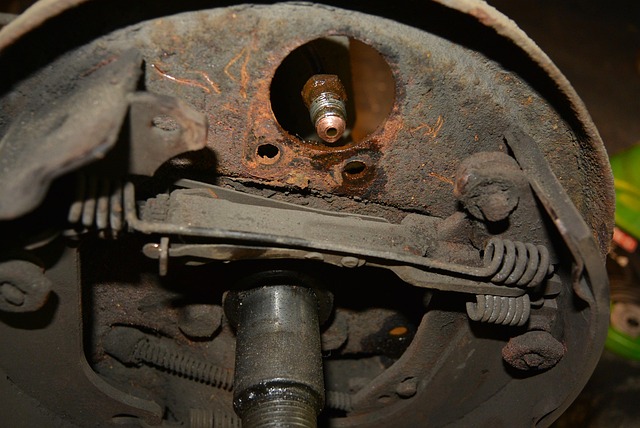
Rust is a common issue that plagues many vehicle owners, especially those in regions with harsh weather conditions or high humidity levels. Understanding auto body rust and its causes is the first step in choosing the best rust repair method for your vehicle. Auto body rust typically starts as a thin layer on the metal surface, often appearing as a reddish-brown stain. Over time, if left untreated, it can lead to significant structural damage, compromising the integrity of the car’s body panels and frames.
Several factors contribute to auto body rust, with the primary culprits being exposure to moisture, salt, and other corrosive substances. Driving in rainy or coastal areas, or frequent use of road salt for de-icing, significantly increases the risk. Once rust forms, it can spread rapidly, affecting surrounding metal surfaces. The process weakens the metal, making it brittle and more susceptible to further damage. For effective rust repair, especially on older vehicles or those with extensive corrosion, considering specialized rust removal treatments like industrial rust elimination techniques is crucial. These methods use powerful chemicals or physical processes to strip away existing rust and protect the metal with industrial strength rust inhibitors.
Evaluating Rust Damage: Visual Inspection Techniques
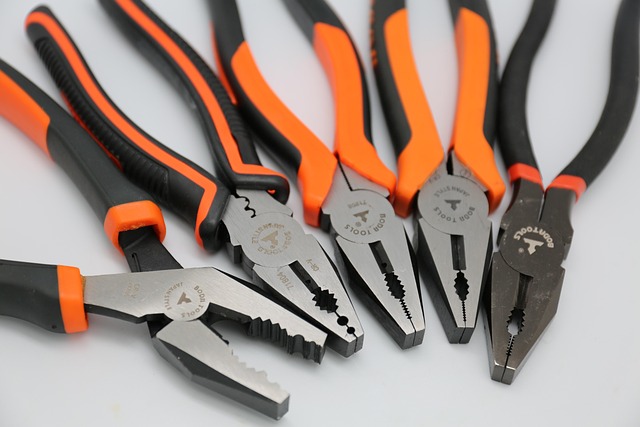
Evaluating Rust Damage: Visual Inspection Techniques
When it comes to selecting the best rust repair method, understanding the extent of the damage is key. The first step in any rust repair process is a thorough visual inspection. This involves closely examining the affected area for signs of corrosion and rust buildup. Look for flaking or peeling paint, which often indicates the presence of rust underneath. Check for pitting, where small depressions form on the metal’s surface due to corrosion.
Use a bright light or magnifying glass to scrutinize hard-to-reach areas and hidden spots. Pay attention to any visible cracks or deformities in the body panels. By combining visual cues with knowledge of rusty equipment maintenance tips, you can accurately assess whether the damage is superficial or requires more intensive rust removal services, such as those offered by professionals who specialize in removing rust from concrete.
Safety First: Protective Gear for Rust Repair
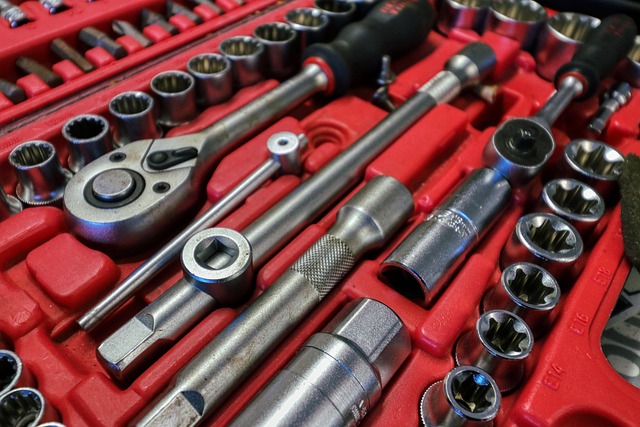
Before tackling any auto body rust repair, prioritizing safety is paramount. Rust can be a hazardous material, releasing toxic particles into the air when cut or sanded. Therefore, wearing protective gear such as gloves, safety glasses, and a respirator mask is essential. These precautions safeguard you from potential health risks associated with handling rust and its dust.
Additionally, ensuring proper ventilation in the workspace is crucial for minimizing exposure to harmful fumes. Once prepared, you can move on to selecting the right rust repair method, whether it’s a remedy for rust on wood or metal surface preparation before painting. Remember that the right gear and thorough surface treatments like metal surface rust removal are key steps in achieving a long-lasting, seamless finish.
Tools and Materials for Effective Rust Removal
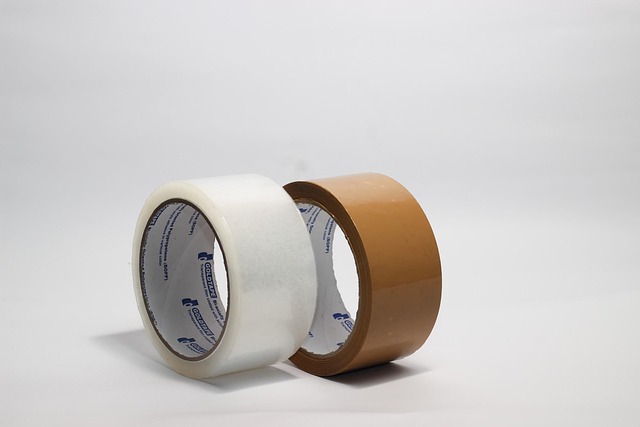
When tackling auto body rust repair, having the right tools and materials is paramount to achieving effective rust removal. A selection of specialized rust repair tools includes wire brushes, sandpaper (ranging from coarse to fine), a pressure washer, and a rust converter or primer. These tools facilitate thorough metal surface preparation, ensuring any loose rust particles are scrubbed away and the surface is properly cleaned before painting.
For optimal results in home rust removal tips, consider using a combination of these materials. Coarse sandpaper helps strip away heavier rust layers, while finer grits smoothen the surface for a more even application of primer or paint. A pressure washer can efficiently blast away stubborn rust buildup, though it’s crucial to wear protective gear during this process. Ultimately, selecting the right tools for the job makes all the difference in achieving lasting rust repair and a professional finish on your vehicle.
Step-by-Step Guide to Successful Rust Repairs
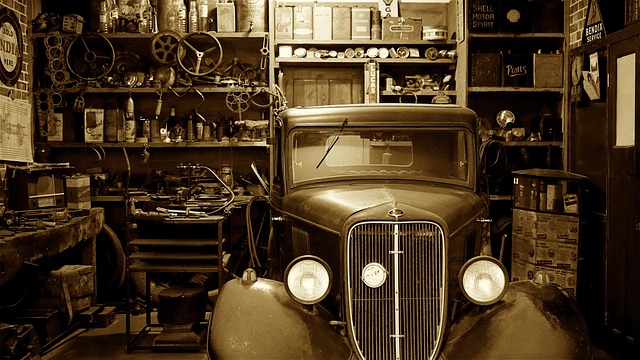
Repairs for auto body rust involve several strategic steps to ensure lasting results and a seamless finish. First, identify the extent of the rust by examining the affected area thoroughly. This step is crucial as it determines the repair approach—minor touch-ups or comprehensive restoration. For limited damage, like small pits or spots on a rusty bicycle restoration, using specialized rust removal services can prepare the surface for repainting. The process typically starts with sanding to smoothen the rusted surface and then applying a primer to block corrosion.
For more significant areas of corrosion, removing rust from tools might be necessary to access hard-to-reach spots. Once exposed, thoroughly clean and dry the metal. Then, use appropriate rust-conversion coatings or epoxy putty to fill in damaged areas, followed by careful sanding for a smooth transition with the surrounding body panel. After achieving a smooth surface, apply a high-quality paint that matches the vehicle’s original finish, ensuring a durable and protective barrier against future rust formation.
Auto body rust repair is a complex but essential process that, when approached with the right knowledge and safety precautions, can restore vehicles to their former glory. By understanding the causes and effects of rust, inspecting damage effectively, and using suitable tools and materials, you’re well on your way to successfully navigating the rust repair process. Remember, selecting the right rust repair techniques is key to achieving lasting results. With the proper guidance, you can transform a rusty shell into a sleek, reliable vehicle once again.
